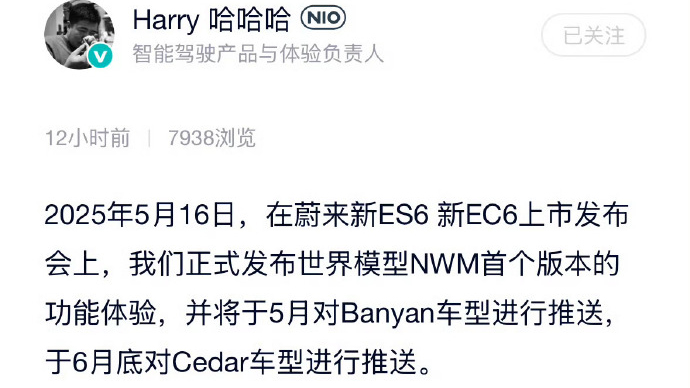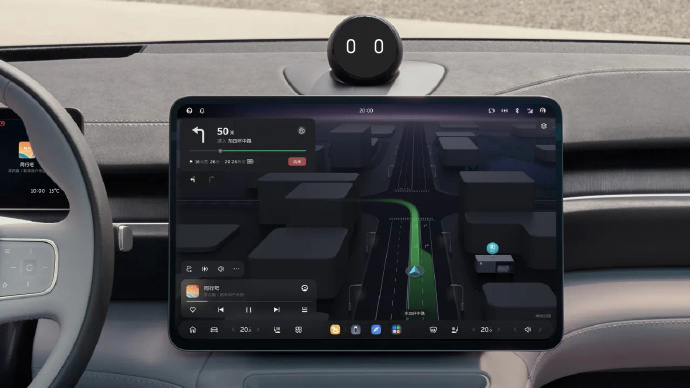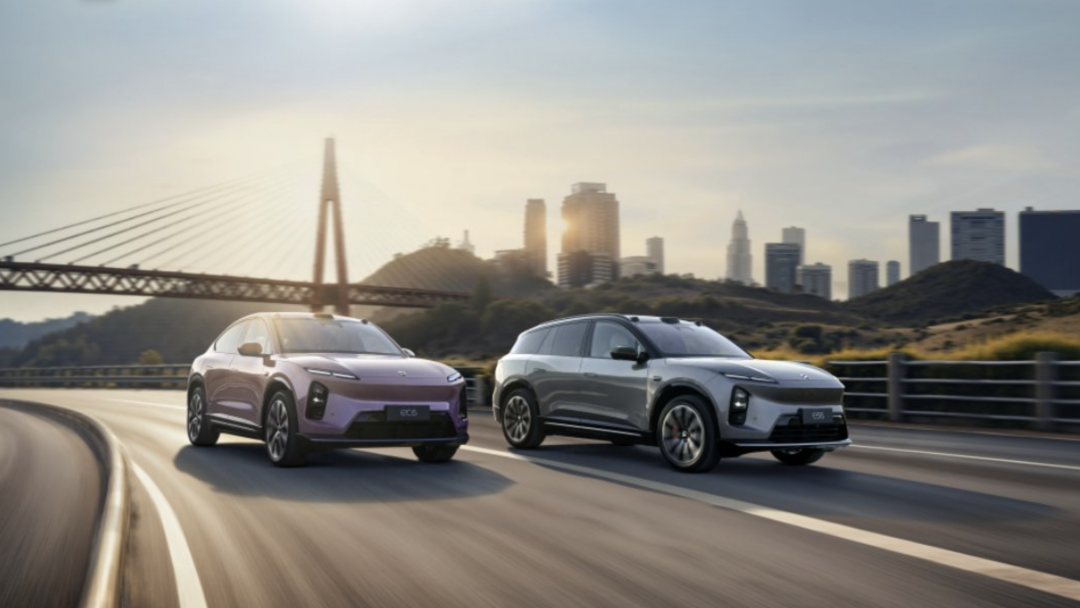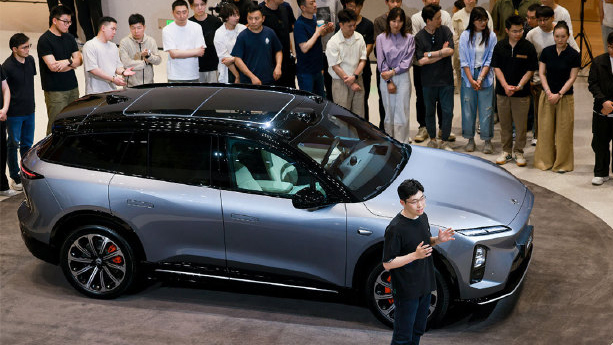Generational Leap: NIO's Refreshed Models Aim for Q4 Profitability
![]() 05/19 2025
05/19 2025
![]() 524
524

On the evening of May 16, NIO officially unveiled its revamped models, the new ES6 and EC6. Prior to the event, Li Bin, NIO's founder, chairman, and CEO, personally demonstrated the new ES6's high-speed tire blowout safety feature, simulating a front right and rear right tire blowout at 120 km/h, resulting in a smooth stop.
According to NIO officials, the new ES6 and EC6 incorporate advanced tire blowout safety control, mirroring the strategy of the flagship ET9. Earlier, Li Bin had tested the ET9's "150+ km/h high-speed straight-line tire blowout" feature. He emphasized the importance of CEOs personally conducting such tests, prompting some netizens to quip that Li Bin has his own "triathlon" routine.
Moreover, the new models integrate technologies from the ET9, including the NT.Cedar S Snow Pine Intelligent System, ET9's UI digital design interface, seat platform, and other configurations. Built on the NT2.5 platform, the refreshed ES6 and EC6 represent a logical progression towards a generational replacement.

Despite maintaining the same starting prices as their predecessors (338,000 yuan and 358,000 yuan, respectively), NIO differentiates its offerings through its Battery as a Service (BaaS) plan and limited-time benefits exceeding 50,000 yuan (including 5 years of free battery swaps, NOP+ free usage rights, etc.), embodying a "hardware parity + service premium" strategy. This approach not only respects existing car owners but also enhances product capabilities through configuration upgrades.
Generational Refresh Logic
The new ES6 and EC6 showcase core breakthroughs in intelligent driving, smart cabin, and chassis performance. Their technological upgrades transcend traditional mid-cycle refreshes, akin to a full product iteration.
Equipped with NIO's proprietary Shenji NX9031 chip, boasting a single-chip computing power of 508 TOPS, and 29 perception hardware components including 1 LiDAR, 7 8-megapixel cameras, 4 3-megapixel cameras, and 1 4D imaging radar, the new models offer comprehensive navigation assistance for urban, highway, and parking lot scenarios. Compared to the previous models, which only supported highway navigation assistance, the new cars exhibit a qualitative leap in intelligent driving capabilities, with significant improvements in decision-making efficiency and safety, particularly in complex urban environments.

In July last year, NIO officially introduced NWM (NIO World Model), China's first intelligent driving world model. Prior to the May 16 event, NIO's head of autonomous driving products and experience shared a one-shot video of NWM's point-to-point assisted driving, showcasing a journey from an underground garage parking space, through urban and highway areas, to another ground-level parking space. NIO's urban navigation assistance function automatically recognizes traffic lights, pedestrians crossing, and other scenarios, executing complex maneuvers like unprotected left turns and roundabout navigation.
Furthermore, the new models come standard with CDC electromagnetic suspension, offering a 29% improvement in fine bump filtration efficiency after retuning. An added rear executive mode adaptively adjusts chassis stiffness, further enhancing ride comfort.
While the powertrain retains a dual-motor four-wheel-drive configuration with a combined power of 360kW and torque of 700Nm, the application of silicon carbide power modules optimizes vehicle energy consumption. The 75kWh battery version provides a CLTC range of 500 kilometers, while the 150kWh semi-solid-state battery (available only for battery swaps) offers a range of 930 kilometers, sharing the same battery pack as the flagship ET9 model.
The cabin experience has also undergone a significant upgrade. The new models feature a 15.6-inch AMOLED horizontal screen and a 19.4-inch ultra-large W-HUD heads-up display system, supporting gesture operation and multi-task split-screen functionality.

In summary, one of the highlights of the refreshed ES6 and EC6 is the integration of ET9's advanced technologies, such as millisecond-level tire pressure sensors. Prior to the event, Li Bin drove the new ES6 to perform a tire blowout test on the right front and rear wheels at 120 km/h.
Is NIO, Avoiding Price Wars, Closer to Profitability?
During the event, NIO announced multiple car purchase benefits, including 5 years of free battery swaps, free selection of AC charging and discharging packages, 5 years of NOP+ free usage rights, etc. NIO officials stated that the value of these limited-time benefits exceeds 50,000 yuan. The launch of the two refreshed models underscores NIO's pricing strategy: increased configuration without price reduction, ensuring no offense to existing car owners.
Based on past experience, the "5566" models, represented by the ET5, ET5T, ES6, and EC6, have become NIO's key product portfolio and delivery mainstay. In the first four months of this year, NIO delivered a total of 65,994 vehicles, averaging approximately 16,000 vehicles per month.

As early as the end of last year, Li Bin set a target of doubling sales by 2025, aiming for an annual sales volume of over 400,000 vehicles across three brands. Based on the current situation, NIO needs to sell an average of 47,000 new vehicles per month in the coming period to achieve its annual sales target. Thus, the significance of the refreshed ES6 and EC6 to NIO is evident.
Furthermore, 2025 marks a pivotal year for NIO's product launches, with nine new models, including the new ES6 and EC6, set to hit the market. Li Bin set a goal earlier this year to achieve profitability in the fourth quarter. In a financial report conference call, he noted that by the end of 2025, NIO aims for a gross margin of 20% for its brand and 15% for Lido. Financial report data reveals that in 2024, NIO's automotive business gross margin was 13.1%.

To achieve this goal, NIO has implemented comprehensive cost reduction and efficiency enhancement measures across R&D, supply chains, and sales services. In the supply chain, NIO employs a platform-based and systematic strategy to increase component reuse rates, such as platformizing seat frames, resulting in a 10% cost reduction. By unifying data interfaces, NIO has reduced the cost per vehicle from 2,000 yuan to 1,000 yuan. Additionally, the opening and cooperation of the battery swapping network (e.g., co-constructing battery swapping stations with CATL) help share costs. Although the current average daily battery swap count per station is only 28 times, falling short of the break-even point (60 times), user growth and ecological cooperation are expected to yield long-term economies of scale.
Over the past year, NIO has achieved a 10% reduction in the Bill of Materials (BOM) cost of its vehicles, supporting the "increased configuration without price increase" strategy for the refreshed ES6 and EC6.
This strategy contrasts with the current automotive market trend. In April this year, Tesla China announced a "5-year 0% interest" campaign for the all-new Model Y, just three months after its launch. Recently, the 2025 Xpeng G6 and G9 enhanced their cost-effectiveness through increased configuration and price reductions.
In conclusion, as competitors create price surprises through increased configuration and price reductions, NIO, which avoids price wars, faces immense pressure. Changes in the market environment and intensifying competition will be the biggest variables on NIO's path to profitability.








